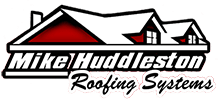Taking care of your shingle roof is crucial for ensuring its long lifespan and protecting your home. A well-maintained roof can save you a lot of money in the long run by preventing costly repairs and replacements. Regular maintenance can also help you spot potential problems before they become serious issues.
One of the first steps in maintaining your roof is to conduct regular inspections. This means checking your roof at least twice a year and after major storms. Look for missing, cracked, or curled shingles, and check for any signs of wear and tear. Catching these issues early can prevent larger, more expensive problems down the road.
Cleaning your gutters and downspouts is another important task to keep your roof in good shape. Gutters that are clogged with leaves and debris can cause water to back up under your shingles, leading to leaks and water damage. Regularly cleaning your gutters ensures that water can flow freely off your roof and away from your home, protecting your roof and foundation.
By taking these and other simple steps, you can extend the life of your shingle roof and keep it looking great for years to come. Regular maintenance is key to preserving the integrity of your roof and safeguarding your home from the elements.
Regular Roof Inspections
Regular roof inspections are crucial for maintaining a shingle roof. By checking your roof twice a year, typically in the spring and fall, you can catch small issues before they become big problems. Look for missing, cracked, or curled shingles, which can indicate that your roof is aging or has been damaged.
During your inspection, pay special attention to areas around chimneys, skylights, and vents. These places are prone to leaks and may need additional sealing. Look for signs of water damage, such as stains or moss growth, as these can indicate that water is not draining properly from your roof.
If you are not comfortable inspecting your roof yourself, consider hiring a professional. They can safely check for damage and may spot issues that you might miss. Regular inspections can extend the life of your roof by addressing problems early and ensuring it remains in good condition.
Cleaning Gutters and Downspouts
Cleaning gutters and downspouts is another key task in maintaining your shingle roof. Gutters that are clogged with leaves, twigs, and other debris can cause water to back up under your shingles. This can lead to leaks and water damage inside your home.
To clean your gutters, use a sturdy ladder and gloves to remove debris by hand. You can also use a garden hose to flush out smaller particles and ensure that water flows freely. Make sure to check the downspouts for any blockages and use a plumber’s snake if necessary to clear them.
It’s best to clean your gutters at least twice a year and after heavy storms, as debris can accumulate quickly. You might also consider installing gutter guards to help reduce the amount of debris that enters your gutters. Keeping your gutters clean ensures that water can properly drain from your roof, protecting both your roof and your home’s foundation from water damage.
Repairing Minor Damages Promptly
Addressing minor damages on your shingle roof promptly can save you from bigger, more expensive repairs later. Small issues, like a few missing or damaged shingles, can quickly escalate if not fixed right away. Regularly check for signs of damage, such as broken shingles, leaks, or granule loss.
If you spot any issues, take action immediately. Replace broken or missing shingles to prevent water from seeping into the roof decking. Use roofing cement or nails to secure the new shingles in place. For small leaks, applying roofing sealant may suffice, but for larger issues, it’s best to call a professional.
Ignoring minor problems can lead to serious consequences, including water damage, mold growth, and structural damage to your home. It’s important to keep an eye out for early signs of trouble and address them swiftly to maintain the integrity of your roof and extend its lifespan.
Maintaining Proper Ventilation and Insulation
Proper ventilation and insulation are essential for a healthy shingle roof. Good ventilation prevents heat and moisture buildup in the attic, which can damage your roof and reduce its lifespan. It also helps keep your home more comfortable and energy-efficient.
1. Ventilation Tips:
- Check Vent Openings: Ensure that soffit and ridge vents are not blocked by insulation or debris.
- Install Attic Fans: Consider adding attic fans to enhance airflow, especially in hot or humid climates.
- Inspect Vent Covers: Make sure vent covers are in good condition and replace them if needed.
2. Insulation Tips:
- Proper Insulation Levels: Ensure your attic has adequate insulation. Too little can lead to heat buildup, while too much can block ventilation.
- Seal Air Leaks: Look for gaps around pipes, lighting fixtures, and other openings. Use caulk or weatherstripping to seal these gaps and prevent air leaks.
Keeping your attic well-ventilated and properly insulated helps prevent ice dams in the winter and reduces the risk of heat damage in the summer, ultimately protecting your shingle roof.
Conclusion
Maintaining your shingle roof involves regular inspections, cleaning gutters, prompt repairs, and ensuring proper ventilation and insulation. These essential steps help extend the life of your roof, protect your home from water damage, and save money on energy bills. By following these tips, you can keep your roof in top shape and avoid costly repairs or replacements.
Ready to take the next step in maintaining your shingle roof? Contact Mike Huddleston Roofing Systems today. Our team of experts is here to ensure your roof stays in excellent condition for years to come. Reach out now for a professional consultation and peace of mind.

